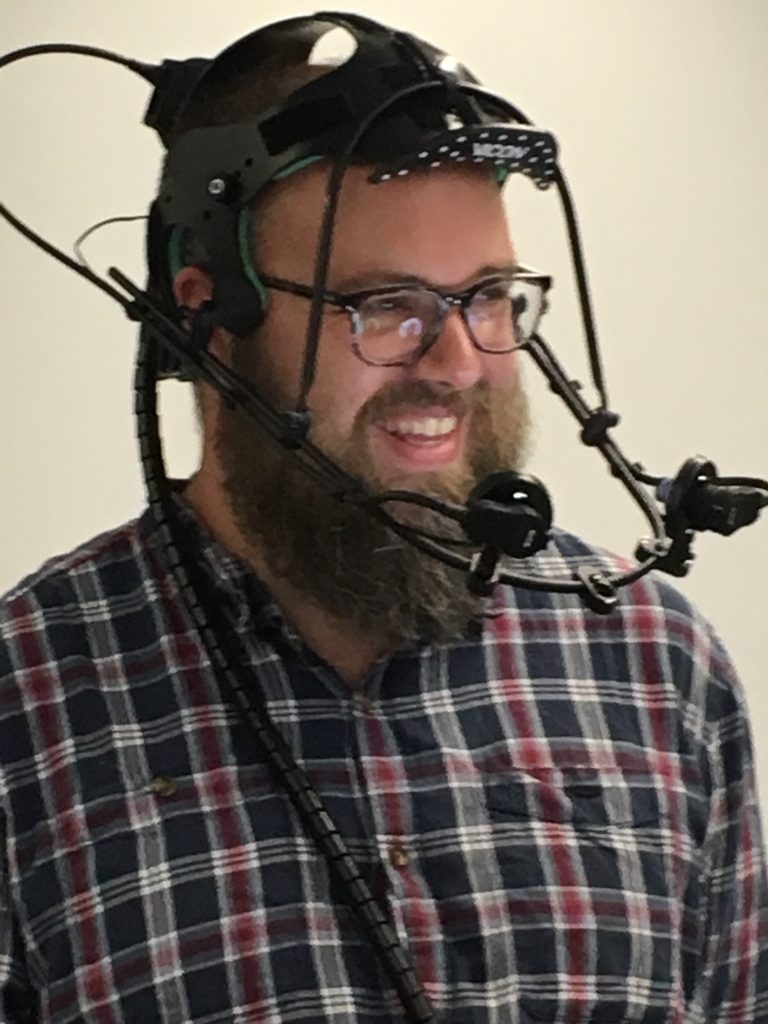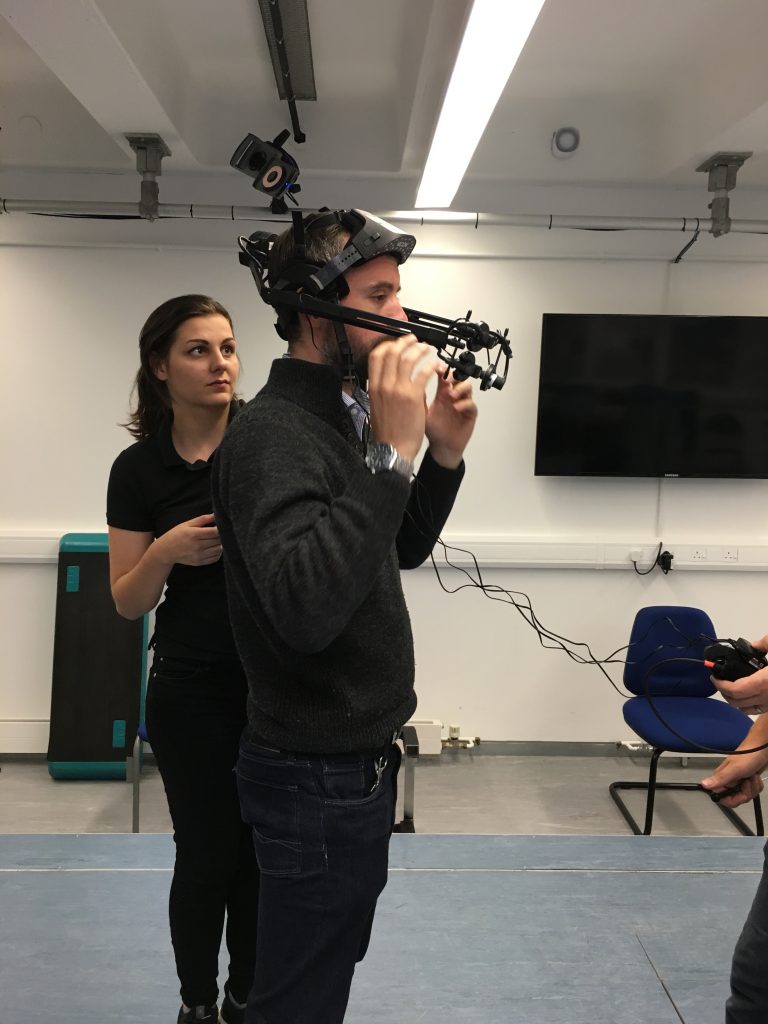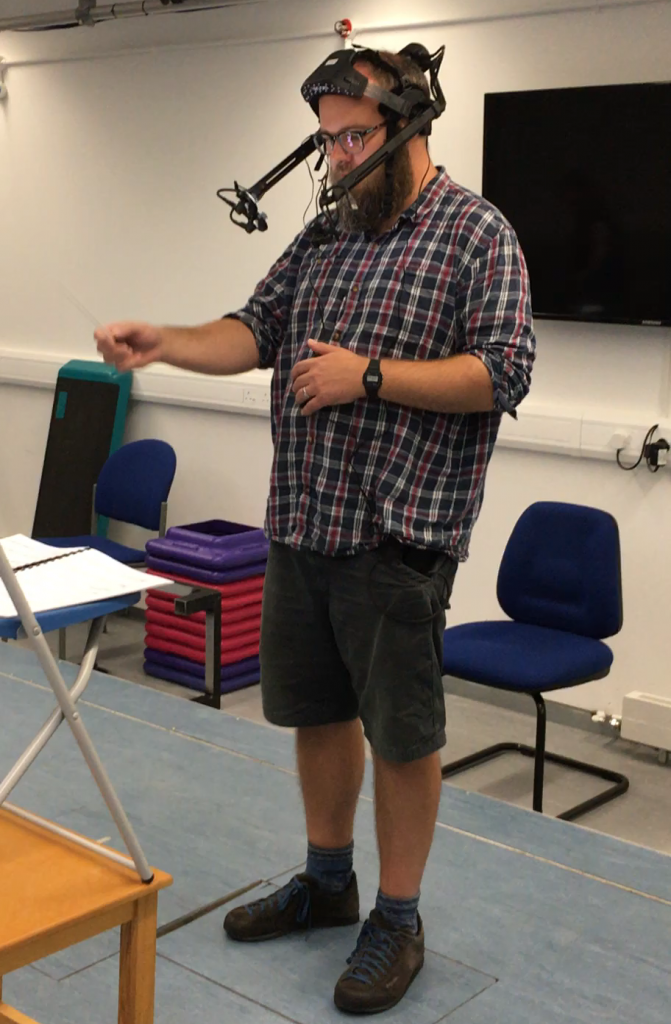A Visit From Vicon
Dr. Richard Polfreman reports on a visit to the University by Vicon Motion Systems to demonstrate their face motion-capture systems.
This week we were especially pleased to welcome a team from Vicon Motion Systems to the University. Vicon are a world-leading developer of motion-capture systems and they came to show us their face capture technologies to explore their potential use in our Capturing the Contemporary Conductor research project – Richard Polfreman (Music), Benjamin Oliver (Music), Cheryl Metcalf (Health Sciences), and research assistant Dan Halford. Vicon mo-cap systems are used in biomechanics research as well as the entertainment industry, where facial expression capture is used to drive animated characters to bring them more realistically to life. Previous studies of conducting have highlighted the importance of facial expressions in communicating to the ensemble, and so we are interested in capturing this information in addition to body motion and beyond simple video recording.
Matt Oughton (EMEA Sales Manager), Dami Phillips (Technical Sales Engineer) and Katie Davies (Support Engineer) arrived at the motion capture lab with two boxes of kit which we were keen to unpack and try out as soon as possible. First was their brand new Cara Lite system, recently announced at SIGGRAPH 2017. This two-camera based system can be used markerless with analysis software to model the movement of the wearer’s face once recorded. The system certainly felt lighter than the previous Cara system, and this version is designed to be customisable to different client needs.

Next we tried the original Cara system, a complete 4-camera true 3D marker-based solution providing complete 3D motion data from the markers on the subject’s face. The marker layout is up to the user, and so this can be customised for the particular level of detail needed.

The Cara headset fitted very snugly and felt secure and comfortable. Heavier than the Cara Lite, but the openness of the camera mounts facilitated a clear line of sight to the score for conducting. The fact that the end result of the processed capture is the 3D motion data of markers (as the body motion data is) may be helpful.

Depending on the application, the main Vicon system can be used without a headset to capture facial expressions, but whether this is appropriate depends on the range movement of the subject, the number of cameras in the system, the other markers being captured etc. For the Capturing the Contemporary Conductor project, we are carrying out tests to decide which option will work best for us!
Our grateful thanks go to Matt Oughton and the team at Vicon for bringing their amazing systems to show us, it was a very interesting and helpful meeting.

